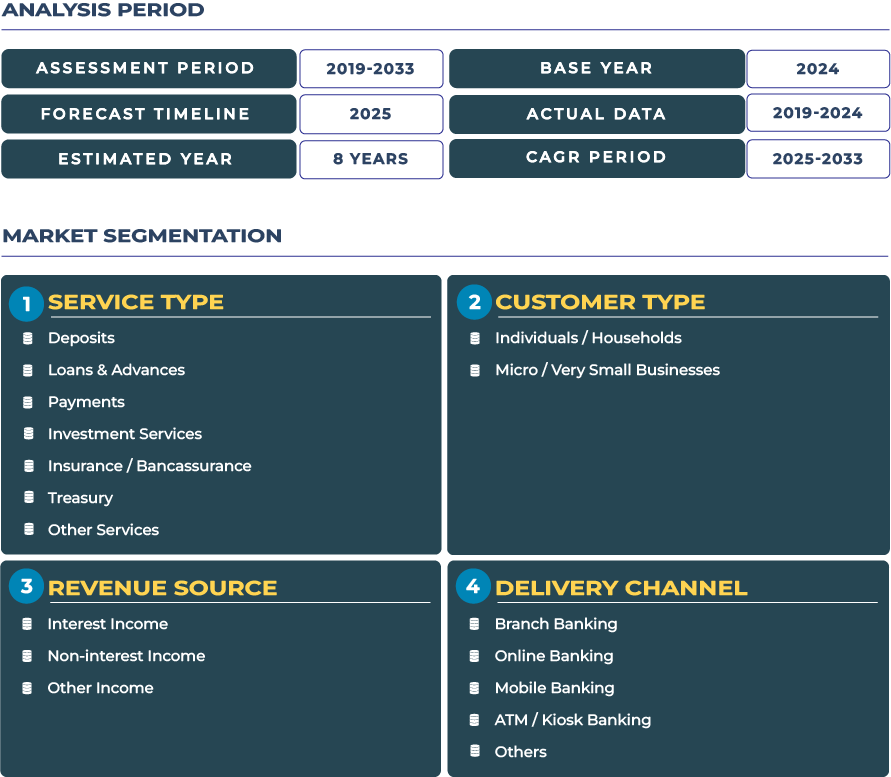Blockchain & Open Banking Ecosystem: How Benelux Is Reinventing Retail Banking
The Benelux region-comprising Belgium, the Netherlands, and Luxembourg-is positioning itself as a convergence zone for blockchain experimentation, open banking interoperability, and fintech orchestration. Regulators and industry stakeholders are encouraging shared infrastructure, API standards, and payment rails that transcend national borders. In this climate, banks in the Benelux retail banking market are evolving not only to manage deposits and credit but to become platforms for transparent, composable financial services.
Note:* The market size refers to the total revenue generated by banks through interest income, non-interest income, and other ancillary sources.
Market Outlook: Charting the Benelux Retail Banking Renaissance
Between 2025 and 2033, the Benelux retail banking sector is forecast to expand from USD 48.4 billion to USD 62.8 billion at a CAGR of 3.3%. The baseline offerings-saving and transaction accounts, personal loans, mortgages-will maintain foundational volume. However, much of the upside will come from payment monetization, embedded finance, cross-border services, and fee income from modular offerings. Benelux’s relatively high digital penetration, small geography, and close economic ties across countries reduce friction for shared infrastructure, which allows banks to scale innovations faster than in more fragmented regions. Nevertheless, margins must contend with competitive pressure, regulatory demands, and technological investment burdens. Banks that can align open banking, blockchain experimentation, and customer trust into scalable platforms will be the leaders of the next era in Benelux retail banking.
Blockchain & Open Banking Ecosystem: How Benelux Is Reinventing Retail Banking
The Benelux region-comprising Belgium, the Netherlands, and Luxembourg-is positioning itself as a convergence zone for blockchain experimentation, open banking interoperability, and fintech orchestration. Regulators and industry stakeholders are encouraging shared infrastructure, API standards, and payment rails that transcend national borders. In this climate, banks in the Benelux retail banking market are evolving not only to manage deposits and credit but to become platforms for transparent, composable financial services.
Note:* The market size refers to the total revenue generated by banks through interest income, non-interest income, and other ancillary sources.
Market Outlook: Charting the Benelux Retail Banking Renaissance
Between 2025 and 2033, the Benelux retail banking sector is forecast to expand from USD 48.4 billion to USD 62.8 billion at a CAGR of 3.3%. The baseline offerings-saving and transaction accounts, personal loans, mortgages-will maintain foundational volume. However, much of the upside will come from payment monetization, embedded finance, cross-border services, and fee income from modular offerings. Benelux’s relatively high digital penetration, small geography, and close economic ties across countries reduce friction for shared infrastructure, which allows banks to scale innovations faster than in more fragmented regions. Nevertheless, margins must contend with competitive pressure, regulatory demands, and technological investment burdens. Banks that can align open banking, blockchain experimentation, and customer trust into scalable platforms will be the leaders of the next era in Benelux retail banking.







